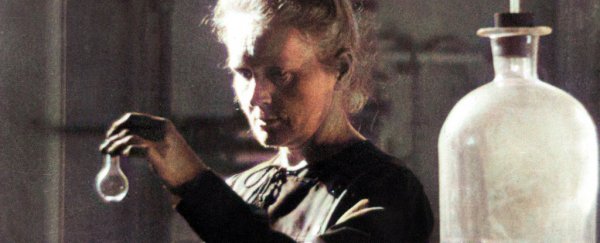Marie Curie was a physicist and chemist who pioneered experimental research into radioactivity, developing novel techniques for isolating radioactive elements and putting them to practical use.
Before her marriage to fellow scientist Pierre Curie, Marie was Maria Skłodowska, the youngest child to a pair of patriotic but impoverished Polish school teachers. Her mother gave up her career as the head of a school to stay home as a care provider, only to lose her life to tuberculosis when Marie was 10 years old.
Money was tight for the Skłodowska family. A bad investment and a series of demotions saw her father do what he could to get by in a city that resented his nationalistic spirit. Under Russian rule, Polish schools no longer provided practical science lessons, so the science-loving teacher brought the now unused lab equipment home for his children to play with.
Marie excelled in her schooling but, like all women, faced the prejudice of her times and was denied a university education. Instead, she attended what was known as the Floating University - an illicit institution without a set location that defied Russia's authority and German influence.
Over time, with financial assistance from her father and money saved from her job as a governess, Marie collected enough to fund a journey to France. At age 24 she was granted a position studying at the University of Paris to further her education in mathematics, physics, and chemistry.
Marie's passion and talent eventually earned her a scholarship in mathematics. It was in this period, working on her degree, that the young Polish student was commissioned by the Society for the Encouragement of National Industry to conduct research on the magnetism of steel alloys.
In her quest for a lab to carry out experiments on magnetism, Marie was introduced to a scientist by the name of Pierre Curie in the expectation that he might have some room to spare. Space was in short supply, but Pierre did what he could, and a shared love of science eventually drew the two even closer together.
Why did Marie Curie study radioactivity?
In 1896, the year after Marie and Pierre were married in a civil ceremony in Paris, a French physicist named Henri Becquerel discovered salts containing the element uranium emitted a penetrating form of radiation in a manner similar to another recent discovery, X-rays.
Curious, and in search of a thesis topic for her own doctorate, Marie applied a technique developed by Pierre and his brother to measure the electrical charge surrounding materials. She found the measurements correlated with the quantity of uranium or thorium they contained, suggesting their 'rays' were ionising (electrically changing) the surrounding air.
She soon found a material called pitchblende, a form of a uranium mineral known as uraninite, that defied her predictions. It provided readings that its known elements couldn't account for.
After years of grinding, dissolving, filtering, and crystalising pitchblende's components, Marie and her husband isolated a substance 400 times more radioactive than uranium, one they would name polonium after Marie's homeland.
Even after extracting uranium and the new found polonium, the pitchblende remained radioactive. Further analysis would lead to a second discovery - radium - in 1902. Marie became the first woman to be awarded a Nobel Prize, sharing the Nobel Prize in Physics with her husband and Becquerel for their contributions to the discovery of radiation.
In 1911, Marie was again awarded a Nobel Prize, this time for chemistry, in recognition of her work in adding two new elements to the Periodic Table. She remains the only woman to be awarded the prize twice.
How did Marie Curie die?
Marie Curie died from aplastic anaemia, a condition thought to be the result of her long term exposure to radiation.
The belongings in her Parisian home and laboratory - including her notebooks, furniture, and clothes - remain radioactive almost 100 years after her death, and will be radioactive for another 1,500 years.
Biography
Born: 7 November 1867 to teachers Władysław Skłodowski and Bronisława, née Boguska.
Died: 4 July 1934 from aplastic anaemia.
As a person: During the First World War, Marie applied the emerging field of radiology to the treatment and diagnosis of wounded soldiers. Together with her daughter Irene, Marie drove mobile units affectionately referred to as "Petits Curies" around the front. These vehicles contained technology that produced X-rays for imaging bodies to spot shrapnel and broken bones.
All Explainers are determined by fact checkers to be correct and relevant at the time of publishing. Text and images may be altered, removed, or added to as an editorial decision to keep information current.
